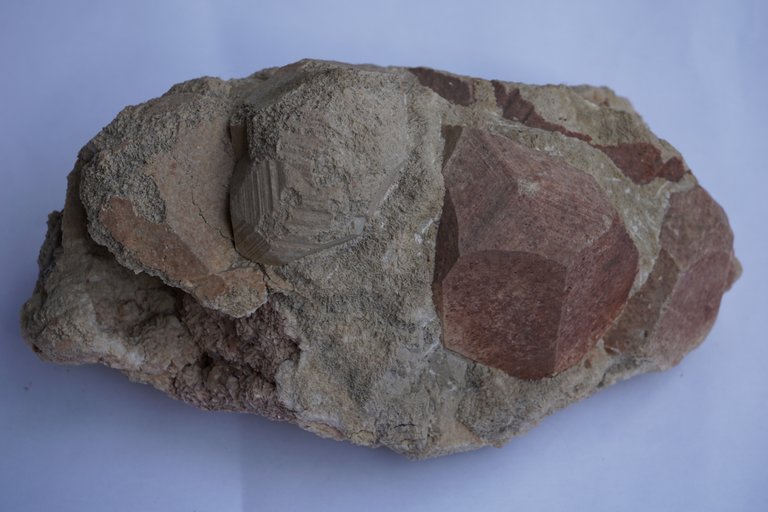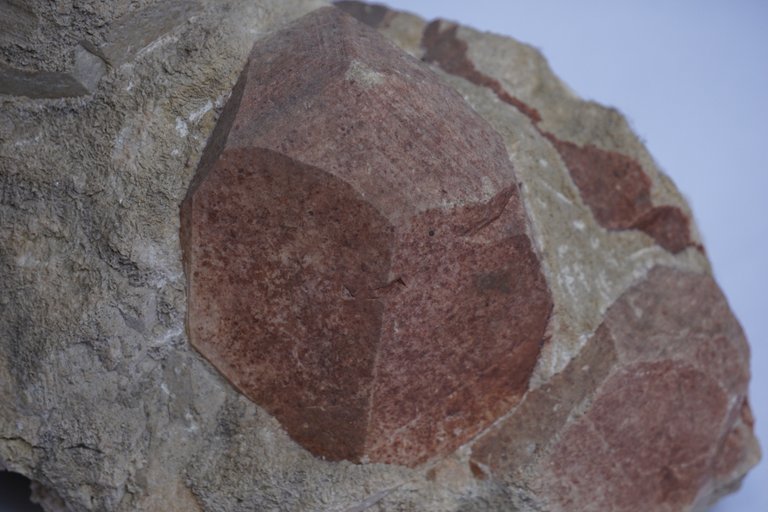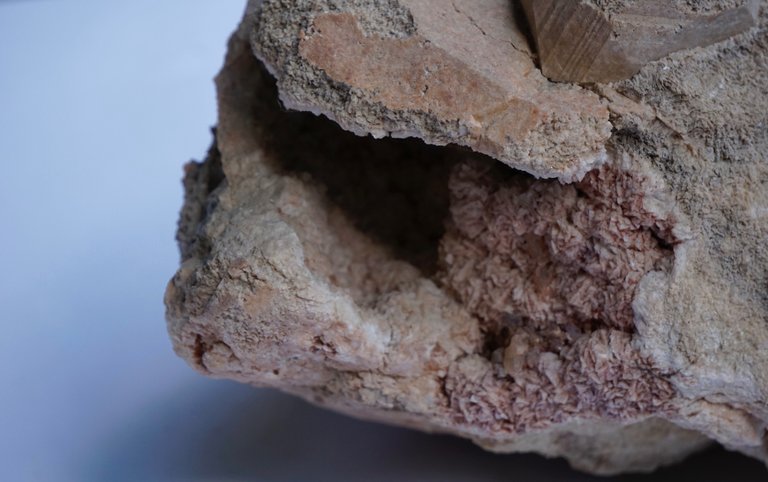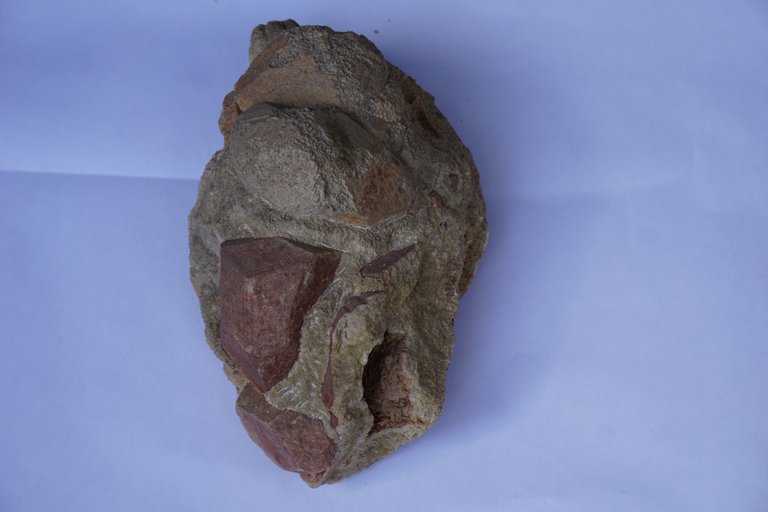Dolomite Mineral
Hey Hive community, first of all I hope that you are well and that you had a good start to the weekend with positive experiences! In my new post, I would like to present a mineral and hope you can learn something new.
The mineral that can be seen here is called Dolomite and it belongs to the mineral class of carbonates and nitrates. Dolomite is usually white but can also be gray, brown or yellow due to mixing or contamination with other minerals. Dolomite is often formed by transformation of calcareous rocks and the specimen that can be seen in my pictures was created by pseudomorphosis and originally it was calcite which has been converted to dolomite. Dolomite can be found almost worldwide and the mineral was first described in 1792 by the Swiss naturalist Horace-Bénédict de Saussure.
Dolomite is often used for the construction of art objects such as decorative floors and is also used by the metal industry. It is also interesting for the pharmaceutical industry to obtain magnesium and calcium and it is also used to purify drinking water. It can also be useful in agriculture and is often used as a fertilizer or to improve soils. It is also used as a healing stone and since it is not very easy to process, it is used less often than jewelry.
The name of the mineral is also associated with the well-known mountain range Dolomites in Italy and is also symbolically associated with the planet Venus and the zodiac sign Aries. Symbolically, the mineral is often associated with positivity or life and as a healing stone it can help to improve the mood and improve the immune system. As always, it is very important to know that this is alternative medicine and you should always ask your trusted doctor about the correct use and possible side effects!
Many thanks for stopping by and watching! I captured the pictures with my Sony Alpha 6000 and 55-210mm lens!




Very cool specimen! That's a nice one, reminds me of the Dolomites in Italy! Those red areas are interesting, do you know what they are?
Glad that you like it! It is also connected to the dolomites and this was caused by pseudomorphosis.
That's really cool!
I think so too! At first glance, this mineral might not be very interesting for some, but if you go deeper into the details, very interesting origin :) Happy that you are also interested in this topic!
!DHEDGE
This post has been selected for upvote from our token accounts by @thebighigg! Based on your tags you received upvotes from the following account(s):
- @dhedge.bonus
- @dhedge.waiv
@thebighigg has 14 vote calls left today.
Hold 10 or more DHEDGE to unlock daily dividends and gain access to upvote rounds on your posts from @dhedge. Hold 100 or more DHEDGE to unlock thread votes. Calling in our curation accounts currently has a minimum holding requirement of 100 DHEDGE. The more DHEDGE you hold, the higher upvote you can call in. Buy DHEDGE on Tribaldex or earn some daily by joining one of our many delegation pools at app.dhedge.cc.
I like the texture of this rock. It's different colours are making it attractive.
Thank you for your interest and I'm glad you like it!
I didn't know that dolomite was used in so many different ways. It's interesting to see how a single mineral can have so many different applications.
I also like that you mentioned the symbolic associations of dolomite. I think it's important to remember that minerals can have both practical and symbolic value. They can be used for practical purposes, such as building materials or jewelry, but they can also be used for spiritual or healing purposes.
Thank you for taking the time to read my post and leave such a nice comment! It motivates me a lot that you were able to learn something new :)
This mineral design and colour both looks cool. I really like it. Thanks for sharing.
Thanks for your friendly comment dear @djbravo
https://twitter.com/lee19389/status/1685591185711083520
#hive #posh
https://twitter.com/LovingGirlHive/status/1685626224192700416